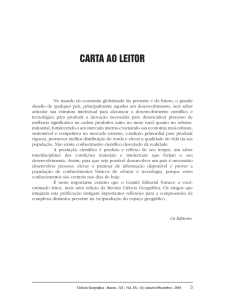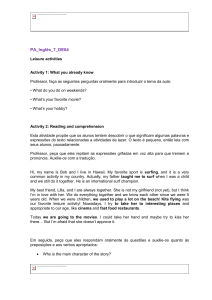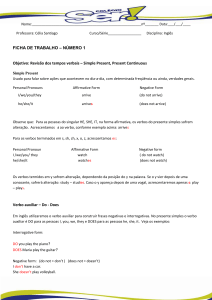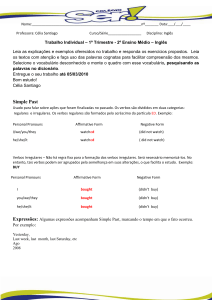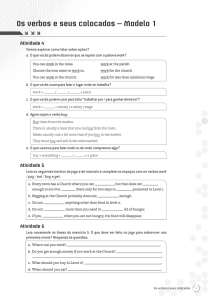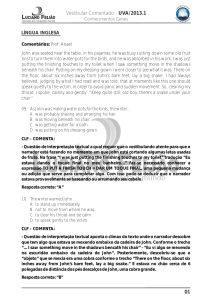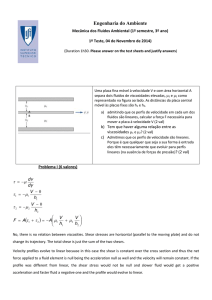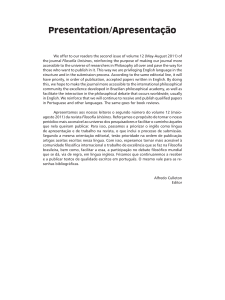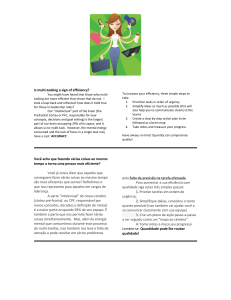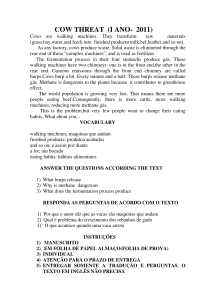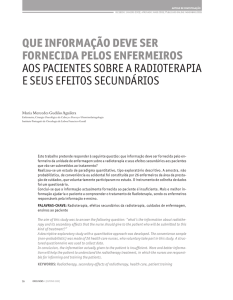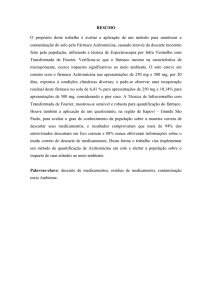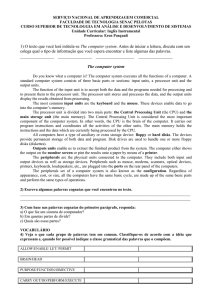Pequeno dicionário de siglas
Propaganda
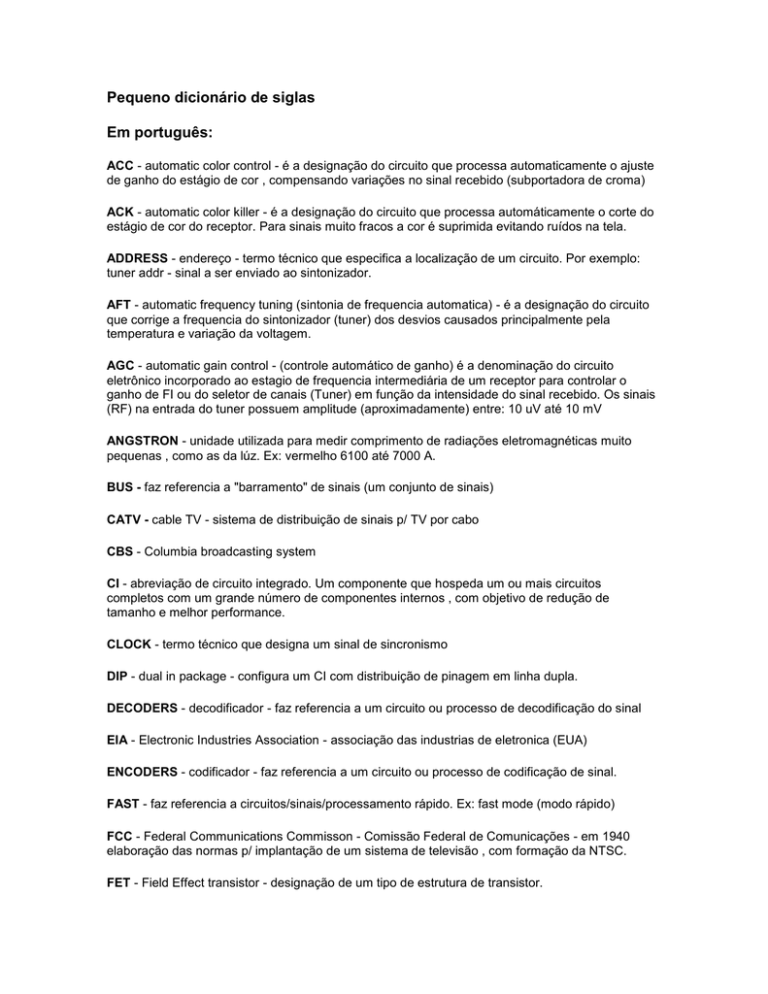
Pequeno dicionário de siglas Em português: ACC - automatic color control - é a designação do circuito que processa automaticamente o ajuste de ganho do estágio de cor , compensando variações no sinal recebido (subportadora de croma) ACK - automatic color killer - é a designação do circuito que processa automáticamente o corte do estágio de cor do receptor. Para sinais muito fracos a cor é suprimida evitando ruídos na tela. ADDRESS - endereço - termo técnico que especifica a localização de um circuito. Por exemplo: tuner addr - sinal a ser enviado ao sintonizador. AFT - automatic frequency tuning (sintonia de frequencia automatica) - é a designação do circuito que corrige a frequencia do sintonizador (tuner) dos desvios causados principalmente pela temperatura e variação da voltagem. AGC - automatic gain control - (controle automático de ganho) é a denominação do circuito eletrônico incorporado ao estagio de frequencia intermediária de um receptor para controlar o ganho de FI ou do seletor de canais (Tuner) em função da intensidade do sinal recebido. Os sinais (RF) na entrada do tuner possuem amplitude (aproximadamente) entre: 10 uV até 10 mV ANGSTRON - unidade utilizada para medir comprimento de radiações eletromagnéticas muito pequenas , como as da lúz. Ex: vermelho 6100 até 7000 A. BUS - faz referencia a "barramento" de sinais (um conjunto de sinais) CATV - cable TV - sistema de distribuição de sinais p/ TV por cabo CBS - Columbia broadcasting system CI - abreviação de circuito integrado. Um componente que hospeda um ou mais circuitos completos com um grande número de componentes internos , com objetivo de redução de tamanho e melhor performance. CLOCK - termo técnico que designa um sinal de sincronismo DIP - dual in package - configura um CI com distribuição de pinagem em linha dupla. DECODERS - decodificador - faz referencia a um circuito ou processo de decodificação do sinal EIA - Electronic Industries Association - associação das industrias de eletronica (EUA) ENCODERS - codificador - faz referencia a um circuito ou processo de codificação de sinal. FAST - faz referencia a circuitos/sinais/processamento rápido. Ex: fast mode (modo rápido) FCC - Federal Communications Commisson - Comissão Federal de Comunicações - em 1940 elaboração das normas p/ implantação de um sistema de televisão , com formação da NTSC. FET - Field Effect transistor - designação de um tipo de estrutura de transistor. Fh - frequencia horizontal - especifica a frequencia de varredura horizontal que para o sistema "M" tem o valor de 15750 ou 15734,264 p/ sistemas a cores. Este valor é decorrente do cálculo para perfeita intercalação de frequencias: 3,575611/(909/4) Fv - frequencia vertical - especifica a frequencia de varredura vertical que para o sistema "M" tem o valor de 60 Hz ou 59.94 Hz p/ sistemas a cores. FI - frequencia intermediaria (em ingles IF) -circuito amplificador do sinal de radio frequencia já convertido para um frequencia fixa , que em TV é tida como: 41.25 Mhz para a portadora de áudio e 45.75 para a portadora de vídeo. FIELD - campo - em sistemas de varredura de televisão - cada quadro (60Hz) é composto por dois campos - um par e outro impar , cada um com 262,5 linhas (padrão "M") Fosc - frequencia do oscilador GND - abreviação de "ground" ou terra elétrico. GP - general purpose - termo técnico que faz referencia a "uso geral" Heat sink - dissipador de calor Hot - designação do circuito conectado diretamente a rede elétrica , por isto chamado de "quente" I2C - um método de codificação de sinais digitais para comunicação entre circuitos , criado pela Philips. The worldwide standard for IC communication. INFRARED - (IRED) infravermelho - faz referencia ao tipo de radiação (lúz) (por exemplo: utilizada em controle remoto) LED - abreviação de light emiting diode - diodo emissor de lúz LDR - abreviação de light dependence resistor - resistor variavel um função da lúz. RF - rádio frequência - é a designação de um sinal de alta frequencia . RC - circuito utilizando resistor e capacitor - normalmente para filtros ou osciladores. MOS - Metal-oxido- substrato - designação de um tipo de estrutura em semicondutores. NTSC - National television Systems Committee -sigla que designa o sistema de codificação do sinal de cor adotado nos EEUU. Neste sistema / padrão M - a subportadora de croma tem o valor de : 3.579545 Mhz. NPN - designação da polaridade dos elementos de um semicondutor: negativo / positivo / negativo. PACKAGE - embalagem - encapsulamento PAL-M - sigla que designa o sistema de codificação do sinal de cor adotado no Brasil - "phase alternating line" - do padrão "M". Neste sistema / padrão M - a subportadora de cor tem o valor de: 3.575611 Mhz PLL - phase locked loop - sigla que designa um tipo de oscilador sintetizador de frequencia. PNP - designação da polaridade dos elementos de um semicondutor : positivo / negativo / positivo. PS - phase shift - método de gravação do sinal de croma em videos VHS RANGE - faixa - variação - limites SECAM - sistema de cor utilizado pela : França , Bulgária , Siria , Egito etc. SAP - abreviação de second áudio program - programa de áudio alternativo - normalmente contem a trilha sonoro original de um filme ou documentário. SCR - designação de um semicondutor tipo chave eletrônica , com controle de abertura. SOT23 - Plastic surface mouted package; 3 leads - designação de um tipo de encapsulamento para semicondutores (transistores / circuitos integrados) . O número pode variar em função do tipo . Tipos de encapsulamento: metal package / ceramic package / plastic package. SMD - surface mounting device - componentes ultra miniatura , para montagem direta sobre o circuito impresso. Start - designação de um sistema de partida elétrica , especialmente em fontes chaveadas. Switch mode - designação do modo chaveado de atuação. SHF - banda de RF designada a hospedar canais especiais - como os de satelite. Tr - abreviação de transistor . Componente semicondutor com diversas aplicações na eletrônica. UHF - ultra hight frequency - (frequência muito alta) - que hospeda os canais de 14 a 83 ( 470 Mhz a 890 Mhz) VHF - very hight frequency - (frequencia muito alta) - é a designação da banda de frequencias de 54Mhz até 216 Mhz - e que hospeda os canais 2 até o 13 DE TV. Esta faixa esta dividida em banda baixa ou Low (canais 2 a 6) e banda alta ou hight (canais de 7 a 13) VHS - Video Home System - sistema de video cassete doméstico , cujas características principais são: largura da fita = 12,65 mm ; diametro do cilindro = 62 mm ; azimuth = +- 6 ; velocidade da fita em SP = 33,35 mm/seg. Xc - simbolo para o valor da reatância capacitiva Xtal - Abreviação de Cristal - elemento ressonador utilizado em osciladores. Xl - simbolo para o valor da reatancia indutiva. Em Inglês: Glossary of Wireless Terms 100Base-T - A generic name for 100 Mb/s twisted pair CSMA/CD proposals before the IEEE 802.3. Specific proposals include 100Base-Tx and 100Base-T4. 10Base-T - A 10 mbps Ethernet specification defined by the IEEE 802.3 committee that utilizes category 3 or category 5 twisted pair wiring. The maximum segment length is 100 meters and is installed in star topology to a central hub. ANSI - American National Standards Institute. A U.S. organization, chartered to accredit standards developed by a wide variety of industry groups, without improper influence from any one company or organization. AP - Access Point; an abbreviated term for Integrated Access Point. The BWS Base Station. Provides connections to the PDN and onwards to the WAN. ATM - Asynchronous Transfer Mode. A multiplexed information transfer and switching method in which information is organized into fixed-length 53-octet cells, and transmitted according to each application's instantaneous need. ATM is similar to packet switching, because bandwidth is allocated on demand. Thus, it can accommodate bursty data traffic. However, ATM is also similar to time division multiplexing, because transmissions occur in fixed-sized cells. If an application is given these cells on a periodic basis, ATM offers a fixed throughput every second, and therefore ATM can be used for circuit-mode or circuit-emulation traffic. ATM is asynchronous because the recurrence of cells from an individual application is not necessarily periodic. AWGN - Adaptive (or Average) White Gaussian Noise. BER - Bit Error Rate. BPSK - Binary Phase Shift Keying uses a single carrier with the phase shifts of 180° to carry the signal. CIR - Committed Information Rate. The average rate of information transfer a subscriber has stipulated for a Frame Relay permanent virtual circuit. For the BWS Release 2 product this will apply to the aggregate total of the virtual connections established for a single user across the air interface from the AP to the CPE’s. COGS - Cost Of Goods Sold. Includes cost of materials, manufacturing & overhead. Does not include profit and customer shipping. CPE - Customer Premises Equipment. Communication equipment residing on the end user's side of the network interface boundary. Also used to describe the BWS Remote Station (IDU and ODU.) CRC - Cyclic Redundancy Check. An error detection calculation / error detection code used in data transmission. CT - Craft Terminal. A personal computer with appropriate application software used by maintenance personnel to conduct OAM&P functions. EIRP - Effective Isotropic Radiated Power. Effective Isotropic Radiated Power (EIRP) is a figure of merit for the net radiated power in a given direction. It is equal to the product of the power supplied to a transmitting antenna and the antenna gain in a given direction relative to an isotropic radiator, expressed in Watts. EMC - Electromagnetic Compatibility. International standards for emissions of, susceptibility to, and conduction of electromagnetic signals. ETSI - European Telecommunications Standards Institute FCC - Federal Communications Commission. The U.S. federal regulatory agency responsible for the regulation of interstate and international communications by radio, television, wire, satellite and cable. FDD - Frequency Division Duplexing. A design in which different frequencies are used for the Tx and Rx channels. Each Access Point uses separate frequency channels to transmit and receive. FEC - Forward Error Correction: A communications technique that can correct bad data on the receiving end. Before transmission, the data is processed through an algorithm that adds extra bits for error correction. If the transmitted message is received in error, the correction bits are used to repair it. ICMP - Internet Control Message Protocol. In the Internet, a protocol that provides a means for communicating computers (both routers and hosts) to exchange error and informational messages in an IP network. IEC - The International Electrotechnical Commission is the international standards and conformity assessment body for all fields of electrotechnology. IDU - Indoor Unit. That portion of the BWS system at either the AP or CPE that is located inside of the building. The IDU is connected to the ODU via an IF interface. IF - Intermediate Frequency. IP - Internet Protocol. A component of the TCP/IP protocol suite: a connectionless, best-effort, unreliable protocol that operates at the Layer 3 relative to the OSI Reference Model. Reliable connections are provided, off net, end-to-end by Layer 4, TCP. joint application design (JAD)- A parallel process simultaneously defining requirements in the eyes of the customer, users, sales people, marketing staff, project managers, analysts, and engineers. You can use the members of this team to define requirements. LAN - A privately owned and administered network for data communications. “Local Area Network”. MAC - Media Access Control. A sub layer of the Open Systems Interconnect Data Link Layer protocol, which gives rules for resolving contention from multiple transmitters which transmit on a shared transmission medium. MBR - Maximum Bit Rate. The absolute maximum bit rate allocated to a subscriber by a SLA. The system will allow the subscriber to burst up to the MBR. MEGACO - Media Gateway Control. Also know as H.248. A joint IETF/ITU standard to replace MGCP as the communications protocol between Media Gateway Controllers and Media Gateways. MGCP - Media Gateway Control Protocol. Defines the communications procedures for a Media Gateway Controller to provide instructions to and gather information from Media Gateways. Also defines an Application Programming Interface for creating services that use the protocol. MIB - Management Information Base. A network management data structure that maintains performance statistics and settings on a specific network component, such as a router, switch or multiplexer. MIR - Maximum Information Rate. The MIR is specified at set-up time and is used by the traffic policing mechanism to prevent users from sending excess traffic to the network. MTBF - Mean Time Between Failures. An indicator of expected system reliability calculated on a statistical basis from the known failure rates of various components of the system. Usually expressed in hours. MTBO - Mean Time Before Outage. An indicator of expected system availability from known failure rates of the system. Usually expressed in hours. MTTR - Mean Time To Repair. The total corrective maintenance time divided by the total number of corrective maintenance actions during a given period of time. NEBS - Network Equipment Building System. A series of standards issued by Telcordia Technologies (formerly Bellcore) having to do with the conformance of telecommunications equipment to mounting, powering, environmental conditions, etc. NLOS - Non Line of Sight. No line can be drawn between two transmitting devices. Total visual blockage has occurred between the transmitting and receiving devices. Extremely large amounts of reflection, refraction and diffraction can occur on a direct ray between the transmitter and receiver. NMS - Network Management System. The system that is responsible for managing a network (or a portion of the network), via a network management protocol such as SNMP. NrLOS - Near Line of Sight. NrLOS may be considered a visually obstructed line of sight between two transmitting devices but a straight line can still be drawn. Reflection, refraction and/or diffraction on a direct ray between the transmitter and receiver have occurred. OAM&P - Operations, Administration, Maintenance, & Provisioning. The broad categories of functions found in a communications network and/or the business processes found in network service provider companies. ODU - Outdoor Unit. That portion of the BWS system at either the AP or AD that is located outside of the building. The ODU is connected to the IDU via an IF interface. PDN - Public Data Network. A generic term for the collection of networks that provide public data services. Well-known examples are the Internet and X.25. QAM - Quadrature Amplitude Modulation. A modulation technique that uses two carriers in quadrature (using sine and cosine carriers that are 90° apart), and each carrier is modulated in amplitude. QoS - Quality of Service. A broadly used term that refers to the performance attributes of an end-to-end connection. A QoS definition for data would address attributes such as error rates, lost packet rates, throughput, and delay. QPSK - Quadrature Phase Shift Keying uses the sum of two carriers (typically a sine and a cosine) whose phases are 90° apart from one another (hence, in quadrature) to carry the signal. R&TTE - R&TTE/RTTE Directive 1999/5/EC is the European radio and telecommunications regulation which affects manufacturers, suppliers and importers of radio equipment and telecommunications terminal equipment who wish to place such equipment on the market of the European Economic Area (EEA). The EEA includes the following countries: Austria, Belgium, Denmark, Finland, France, Germany, Greece, Iceland, Ireland, Italy, Liechtenstein, Luxembourg, Netherlands, Norway, Portugal, Spain, Sweden, United Kingdom. RIP / RIP-II - Routing Information Protocol. A protocol for exchanging network reach ability and routing information between routers in a router-based network. RJ-11 - A modular 4-wire jack and/or connector typically used with copper cable having two twisted pairs usually unshielded twisted pair Category 3 or Category 5. Used for telephony, 10Base-T and 100Base-Tx Ethernet LANs, and Token Ring LANs. RJ-45 - A modular 8-wire jack and/or connector for use with copper cable having four twisted pairs, typically unshielded twisted pair Category 3 or Category 5. Used for telephony, ISDN, 10Base-T and 100Base-T4 Ethernets, 100VG-AnyLAN, and Token Ring LANs. RSSI - Receive Signal Strength Indication. RTP - Real Time Protocol. A thin protocol that supports transmission of real time data (such as interactive voice and video) over packet switched networks. SLA - Service Level Agreement. A contractual agreement between a service provider and a subscriber specifying the QoS parameters (such as MBR) that the subscriber can expect to receive. SNMP - Simple Network Management Protocol. The network management protocol used within TCP/IP-based Internets. Defines the protocol for managers (clients) to communicate with agents (servers). TCP - Transmission Control Protocol A transport layer in the TCP/IP protocol suite that employs handshaking and error checking to ensure that a message is sent accurately and in its entirety. TCXO - Temperature Compensated Crystal Oscillator. TDD - Time Division Duplex. A design in which different timeslots are used for the Tx and Rx channels. Each Access Point uses a single unique frequency spectrum to transmit and receive at different times. TDMA - Time Division Multiple Access. A process of combining two or more lower-bandwidth communication channels into a higher-bandwidth channel by allocating frequent time slots in turn to each of the lower bandwidth communications. This technique is used in telephone company networks by which digital facilities are deterministically multiplexed. Thus, for example, the 1.536 Mb/s DS1 payload contains 24 time slots of 64 Kb/s each, corresponding to 24 DS0s. Telnet - In the Internet, a TCP/IP application that provides virtual terminal services for a wide variety of remote systems. TFTP - Trivial File Transfer Protocol. A very simple form of the File Transfer Protocol, implemented on top of UDP. TFTP provides no security features. UDP - User Datagram Protocol. A Transport Layer protocol in the TCP/IP protocol suite that allows an application program on one host to send a connectionless datagram to an application program on another host. UGS / UGS-AD - Unsolicited Grant Service. Unsolicited Grant Service – Activity Detection. MAC layer interface services that can be instantiated by a higher level service requester. VLAN - Virtual Local Area Network. The ability to associate different LAN-attached workstations as being part of the same LAN independent of where the workstation is physically attached to the LAN. VoIP / VoP - Voice over IP. Voice Over Packet. The transport of digitized speech in Internet Protocol packets. The speech may be part of a real-time conversation or a non-real-time transaction such as voice mail. VoIP Gateway - A Gateway (a.k.a. Media Gateway, SoftSwitch, Media Gateway Controller, SIP Server, Gatekeeper) is a generic term for a device external to the BWS System that handles VoIP data and signalling traffic. VPN - Virtual Private Network. Generally, the use or provisioning of shared network resources in a manner that such resources appear as "private" or dedicated networks to specific users. VSWR - Voltage Standing Wave Ratio. The ratio of maximum voltage to minimum voltage along the line. Expresses the degree of match between the transmission line and the terminating element (antenna). When VSWR is 1:1 the match is perfect, a VSWR of 1.5:1 corresponds to 96% power efficiency. WAN - Wide Area Network. A computer or communications network that covers a geographic area that is larger than a city or metropolitan area. WiMAX - The WiMAX Forum is a non-profit corporation formed to help promote and certify the compatibility and interoperability of BWA (Broadband Wireless Access) equipment. W-OFDM - Wideband Orthogonal Frequency Division Multiplexing. A spectrally efficient data transport mechanism for the wireless air interface.
